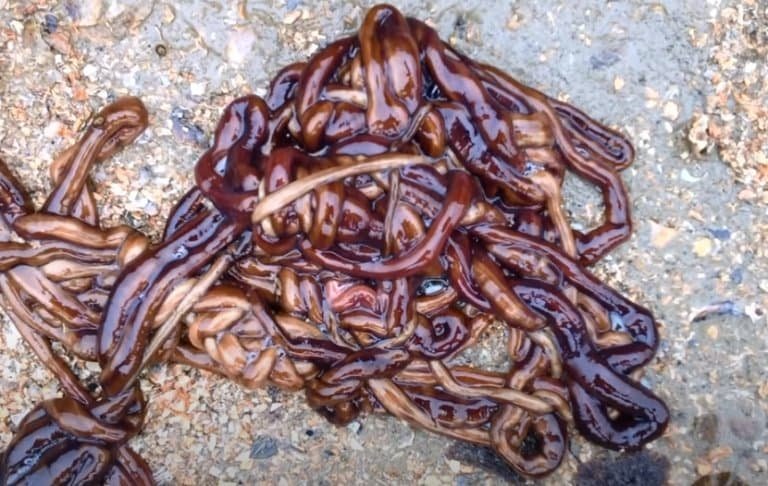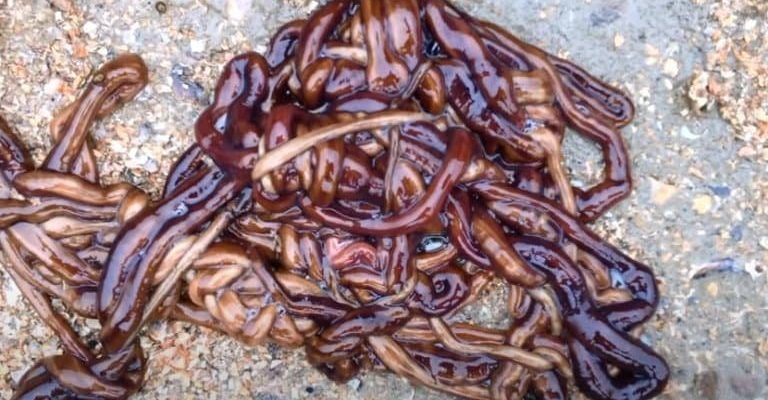
Imagine the bootlace worm as a kind of underwater chameleon. As the temperature and water conditions alter throughout the seasons, this worm adapts to find the best spots to thrive. Knowing their habitat preferences helps us appreciate these intriguing creatures and the ecosystems they inhabit. So, grab your coffee, and let’s explore the world of bootlace worms and their changing homes throughout the year.
Spring: A Time for Renewal
As spring rolls around, the ocean begins to warm up after a cold winter, and life starts to blossom underwater. Bootlace worms take advantage of this time by moving into shallower waters where sunlight shines through. The warmth encourages a burst of activity among marine organisms, and bootlace worms follow suit, enjoying the increased availability of food like detritus and plankton.
You might picture these worms hiding in the sandy or muddy substrate, where they can blend in with their surroundings. Spring is also a time of growth, so bootlace worms often take up residence near seagrass beds or coral reefs, where the food supply is abundant. Here, they can thrive, feeding on organic material that washes down from the surface. So, if you’re ever by the coast in spring, keep an eye out for signs of these fascinating creatures lurking just beneath the surface.
Summer: The Busy Season
As summer arrives, things heat up—not just for us but for bootlace worms as well. They’re very active during this time, often found in slightly deeper waters as temperatures rise. Here’s the thing: the ocean can get pretty warm, but the bootlace worm has a knack for adapting. You might find them burrowed into sand or mud, using their elongated bodies to create cozy tunnels that provide shade and protection from the sun’s harsh rays.
During summer, the abundance of food becomes even more pronounced. The warm waters kickstart a flurry of life, offering bootlace worms a buffet of organic materials. They often congregate in areas rich in nutrients, such as near river mouths or areas with strong currents bringing in food. This is their peak season for growth, and the conditions are perfect for reproduction. So, if you’re curious about these worms, summer is the best time to spot them actively working and reproducing.
Autumn: A Shift in Strategy
When autumn arrives, the waters begin to cool again, prompting bootlace worms to adjust their habits. They often start to move back into shallower waters but may also take refuge in deeper, more stable environments. You might be wondering why this shift happens. As temperatures drop, the energy and food availability start to decrease, leading bootlace worms to find areas that offer a more consistent environment.
During this time, they can be seen retreating into the sediment where they can find more stable temperatures and moisture levels. Their diet may change slightly too, as they adapt to the availability of food sources. You may notice that their activity level decreases; after all, they’re preserving energy for the colder months ahead. It’s a classic example of nature’s ability to adapt to changing conditions.
Winter: The Quiet Season
Winter is like a blanket of stillness for bootlace worms. As the ocean temperature drops significantly, their activity slows down considerably. You might think of these worms as hibernating, even though they don’t actually hibernate. They retreat deeper into the sand or mud for protection against the cold and harsh conditions. Here, they wait it out, tucked away in their camouflage, until spring brings warmth again.
In winter, food can be scarce, so bootlace worms survive on reserves they stored up during the warmer months. Their metabolism slows down significantly, allowing them to conserve energy until the ocean warms up. It’s a survival tactic that many marine creatures employ during the chilly season. So, while it might seem like these worms are inactive, they are simply biding their time until life begins anew in the spring.
Why Understanding Their Habitat Matters
Understanding the habitat preferences of bootlace worms can tell us a lot about the health of marine ecosystems and how climate change affects these delicate environments. As water temperatures rise and seasonal weather patterns shift, these worms—and many marine species—face challenges. If their habitats change significantly, it could impact their survival and, in turn, the ecosystems they support.
For example, if bootlace worms struggle to find suitable homes in spring or summer due to rising temperatures or pollution, this could affect the food web. Healthy populations of bootlace worms contribute to nutrient cycling and play a role in maintaining balanced marine habitats. So by learning about their seasonal preferences, we can better understand how to protect these precious environments.
In conclusion, the bootlace worm showcases a fascinating seasonal dance within its habitat. From the warming embrace of spring to the deep, quiet refuge of winter, these worms adapt gracefully to their changing environments. By learning about their habitat preferences, we gain valuable insight into the broader marine ecosystem and the importance of preserving these delicate habitats.
Next time you think of worms, remember the bootlace worm and its incredible journey through the seasons. They may be small, but they play significant roles in the ocean’s health. Whether you’re an avid marine enthusiast or just curious about the creatures that inhabit our waters, understanding how bootlace worms thrive through the seasons is a captivating tale of adaptation and survival.

